#eye on fashion cattery
Text
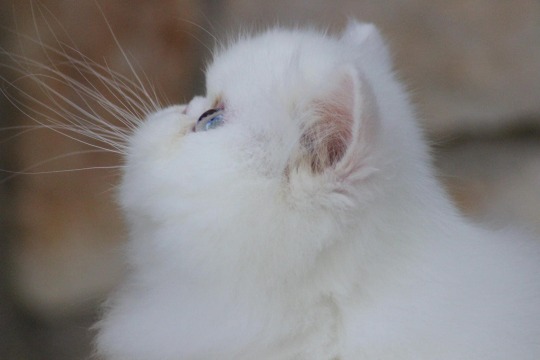
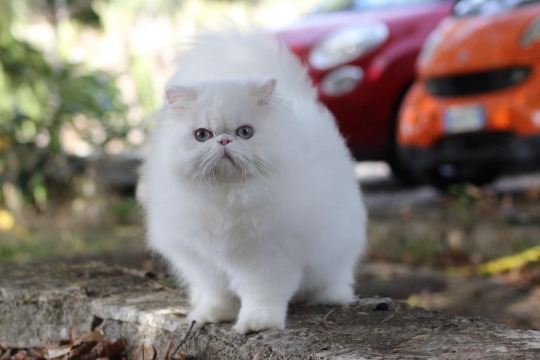
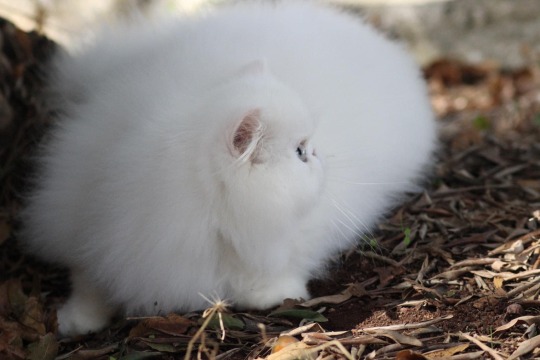
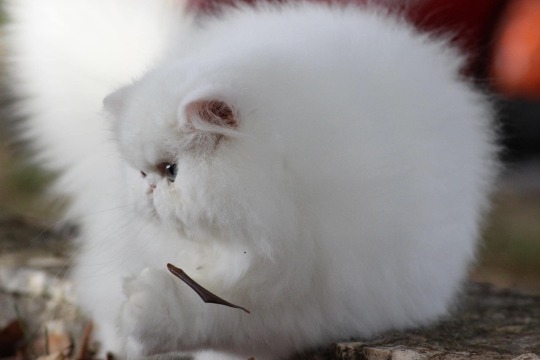



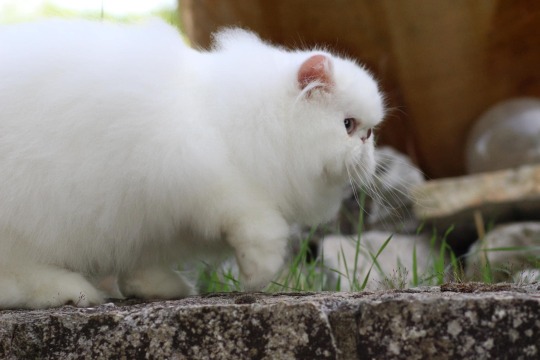
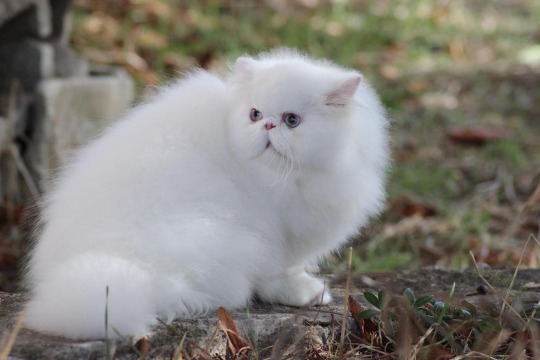
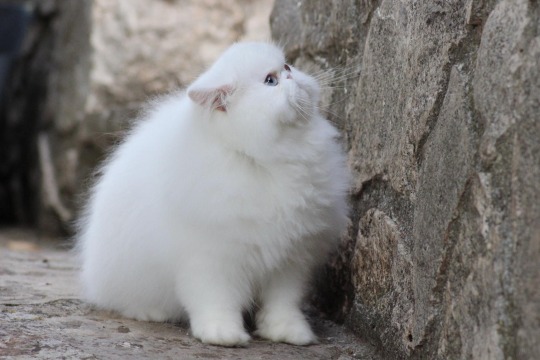
🐱 Persian
📸 Marica Cara Damiani [Eye of Fashion]
🎨 White
29 notes
·
View notes
Note
for the fic prompts: reg and bertie adopting a cat!!!
Prompt filled!
I decided to cut to the chase. ‘I could not help but notice the pamphlet from Battersea sitting on the coffee table.’He now simpered at me boldly. ‘Come on, Reg… you know how dearly I want one! I’ve already cleared it with Mr Manglehoffer. Anyway, he has those yappy shih tzus. Couldn’t you just imagine curling up on the sofa with a little ball of fur, purring sweetly away in your lap? We can get it some toys and a scratching post, and stick its litter tray in the second lavatory. I could even get one of those mini vacuum cleaners to deal with the fur.’Clearly, he’d anticipated all of my possible protests.
For the majority of my life, I have considered myself a fairly guarded and self-contained man. Coming from a large and boisterous family, with siblings that loudly vie for attention and prominence, I have instinctively adopted the role of careful observer. Learning to read human character, and applying that knowledge to best improve my own situation, has become a lifelong skill that has aided me in both my career and social standing.
By contrast, Bertram is naturally carefree and open, largely unconcerned by how his interactions with others affect his own situation. I theorise this may be due to his status as an only child and an orphan, who has had to seek out love and approval by pleasing his extended family and his peer group. The claustrophobic clamour of my own demonstrative family has driven me to be quite guarded.
Of course, that is not to say that Bertram entirely lacks guile. I have noted his novice study of the psychology of the individual (I am not too humble to say that my modus operandi has been his primary inspiration), and he has slowly become more canny in his negotiations.A prime example of this occurred only last week.
I returned home from work. Instead of encountering the usual disarray of empty mugs, unfolded laundry, and errant clutter strewn about the place, the flat was impeccably tidy. The strains of my favourite Tchaikovsky concerto floated from the stereo system, interspersed with muted metallic clangs echoing out from the kitchen. The sound of my beloved singing to himself could also be discerned.
‘What ho, Reg. Dinner will be on in about five. Just got to finish the potatoes. I thought we could eat in the dining room tonight.’Curious, I peered into said space. The table was set for two, accented by a swathe of lit candles and a fresh bouquet of white peonies as a centrepiece. This sort of ceremony was usually reserved for birthdays and other such occasions. As I put away my work things, I pondered what Bertram’s motive could be. I prayed that he hadn’t broken anything irreplaceable. Or, even worse, invoked the wrath of one of his aunts, thus requiring my help to, as he is wont to say, ‘pull him from the soup.’
As I crossed back towards the dining room, I spied one piece of clutter which remained conspicuous on the coffee table: a pamphlet from Battersea Dogs and Cats Home. It reported on the unfortunate spike in abandoned animals that occurs after each Christmas, as well as the purported advantages of taking in a rescue animal as a family pet.
Bertram met me at the table with two plates of juicy sirloin, and an attractive smile. He had donned his pale blue, fitted Cuban collar shirt, which displayed the graceful lines of his neck and collarbone most fetchingly. ‘There’s tiramisu for dessert, too. The one from Angelo’s!’
As we dined, I fought between savouring the exquisite trappings that Bertram had laid out, and the fizzle of exasperation at the imminent pitch that I was in for.Bertram has always been enamoured of cats, and I had long known that I would have to deal with his desire to adopt one as a pet. I am certainly not averse to the animals - in some cases they are charming companions, elegant and affectionate, and less intrusive to a household than a dog. However, they can also possess a changeable temperament, and the scratch-marks and fur they can leave on one’s furniture is, at least in my view, a major detriment. Not to mention the ghastly odour of their litter trays.
I decided to cut to the chase. ‘I could not help but notice the pamphlet from Battersea sitting on the coffee table.’He now simpered at me boldly. ‘Come on, Reg… you know how dearly I want one! I’ve already cleared it with Mr Manglehoffer. Anyway, he has those yappy shih tzus. Couldn’t you just imagine curling up on the sofa with a little ball of fur, purring sweetly away in your lap? We can get it some toys and a scratching post, and stick its litter tray in the second lavatory. I could even get one of those mini vacuum cleaners to deal with the fur.’Clearly, he’d anticipated all of my possible protests.
I pushed a mound of green beans about my plate, and huffed to myself. There are a number of inadvisable fancies that I have striven to cure my fiance of: garish fashion choices, toxic acquaintances, and not least of all a phase where he attempted to learn the banjo. But this, I fear, was more deep-seated.The poet Baudelaire had much to say about the comfort of feline companionship: ‘Viens, mon beau chat, sur mon coeur amoureux.’ Likewise the prophet Mohammed, Catherine the Great, even the sublime Freddie Mercury. My Bertram counted among this group. His beautiful loving heart was eager to make a comfortable home for some lucky beast. While my fastidious habits still balked at the adjustments of taking on a pet, I knew deep down this was a battle I could not win. Especially considering that a softer part of me would be delighted by the little creature’s presence, despite any potential mess.
He interrupted my rumination. ‘I mean, since we’re well settled in to our flat now, and will soon don the spongebag trousers to exchange our vows… I figured it was about time, you know. Expand our little family and all.’While I knew the pleading look in his large blue eyes to be mostly a crafty design, it still had the effect of melting me utterly.
‘Well…’ I said slowly, ‘I insist that I be present at the selection of the animal. I should like to have input as to which one we choose, and the chance to assess its temperament prior to adoption.’‘Of course, old thing, I wouldn’t have it any other way! It’s going to be your cat, too.’‘Be that as it may, cleaning and feeding will fall entirely to you, my poet.’‘Right ho.’
One upshot was that he washed the dishes entirely by himself, and later allowed me to undress him and ravish him in all the ways that pleased me best - though I warrant this last perk was certainly a mutual one.
***
‘Oh Bertie, I’m ever so glad that you’ve come to rescue one of our little sweethearts!’ Ms Bassett, eyes shining, led us cheerfully through to the cattery. ‘You know, Roddy and I just found the perfect baby brother for Piglet, a dear little fox terrier cross named Snowy. Just like the doggie in “Tintin”!’A thoughtful mien passed across Bertram’s face.‘A doggie, eh?’‘No, Bertram.’‘Oh, alright.’
The cattery was a bright, clean space, with the cats kept individually in large perspex enclosures. I confess I was not unaffected by the rows of bright emerald eyes and twitching velvet ears that we beheld.‘Let me know if you would like to meet any of these precious angels, and you can go in and introduce yourselves,’ Ms Bassett informed us.‘I say, I like this one!’
Bertram had already been drawn to one inmate, who’d padded right up to the front of the enclosure to gaze up at him curiously. A small, delicate thing, with grey tabby markings on her mask, back and tail, and white underbelly and legs. As Bertram kneeled to greet her, she chirruped away in a light, dulcet voice.‘Puccini likes you, Bertie! She’s not usually so friendly with visitors.’‘Puccini, eh? We could call her “Poochy” for short, eh Reg?’‘Most amusing, Bertram.’
We entered her enclosure, and she wasted no time in winding herself about Bertram’s legs, still chirping at him. She was rewarded with a gentle scratch on the head, and she purred loudly. I could sense that this was love at first sight.‘Who’s a good Poochy, then? Do you behave yourself for Ms Maddie?’‘Mrowr.’‘Jolly good.’
He plopped himself down, and spent the next hour playing with Puccini. He giggled as she batted at his outstretched wriggling fingers, stroked her plush fur as she gently headbutted his arm, and even let her lick his face with her sandy pink tongue. All the while he cooed at her, while she responded in kind with a lyrical stream of mews and tweets and squeaks.‘Little chatterbox, isn’t she?’‘Like attracts like, Bertram.’
It seemed inevitable - we would not need to see any other cats. After a while I approached Ms Bassett. ‘I believe we have made our selection.’‘More like Puccini has made hers,’ she remarked. ‘But I’m afraid that it’s not that simple. Puccini came from a house full of cats, you see, and doesn’t do well on her own. The policy for adopting her is that she must have another kitty housemate.’
My heart dropped to my stomach. One cat was enough of a compromise, but two cats could be potential bedlam. My mind roved to images of troublesome cartoon siamese, broken ceramics, and overwhelmed house guests.
But then my gaze settled on Bertam cradling the purring Puccini in his arms, a look of pure bliss cast across his lovely face. A heavy sigh escaped me.‘Bertram, we must adopt a second cat in order to take Puccini home. Shall we select one?’
He looked up at me, partly surprised and noticeably moved.‘Oh… are you sure, Reg? I mean, I’d be over the moon to get two of them, but…’I swallowed my diffidence down. ‘I could no more bear to part you from your new friend than I could part the Red Sea.’‘Reg… you are a marvel. Well… since I chose this one, why don’t you choose the second for yourself?’
I left the two of them to seek out our next adoptee. Here I rallied my sound judge of character. Puccini appeared to be bubbly and perhaps a little capricious, so I reckoned that a cat with a steady, serene temperament would prove to be the best influence for her.
I passed the rows of prospective pets, paying careful attention to demeanour and body language. The friendlier, more extroverted cats I discounted right away - they would no doubt prove to exacerbate Puccini’s friskiness. I instead paid attention to the cats who remained calm and still. Some were simply grumpy, and they would not do. Nor did I consider the animals who were sluggish and entirely unresponsive - that could possibly be a sign of poor health.And then, I saw him.
Perched atop a tiered scratching post, this long lean beast was the very picture of feline elegance. He was pure white, with a long tail that was swishing about slowly and gracefully. His face was not soft and round but aquiline, almost lionesque. His eyes were closed in contemplation. The long neck was tilted slightly to the side - all the better to show off his wonderful profile. Had I not known better, I would have deemed him a fine marble sculpture.‘That’s Vasily. Handsome, isn’t he? Would you like to say hello?’
Ms Bassett let me into the enclosure, and I carefully approached him. ‘Good day, Mr Vasily.’At this he opened his eyes, and I was astounded to discover they were a similar hue to Bertram’s: brilliant, summer sky blue. He meowed at me, a low, husky drawl.‘Vasily is a nice chap, very calm. I think he’s the least anxious cat I’ve ever seen,’ said Ms Bassett.
I held up a hand to him, which he gently headbutted. His coat was like silk. He purred at my attention, deeper and more resonant than Puccini’s delicate timbre.I could well picture myself lounging about with a good book and a glass of wine, with this exquisite animal draped upon me. He had a look of such serenity and intelligence, the exemplar of his species.
While I was not eager for his white fur to meet my dark apparel, I spent some time with Vasily, basking in his natural tranquility. Ms Bassett suggested introducing Puccini to him.The smaller cat eagerly jumped up to join him on the scratching post platform, making a very forward introduction in licking the fur on his back. He responded to this by drooping in ecstasy.‘They are both desexed, are they not?’Ms Bassett nodded, and I breathed a sigh of relief.
‘Well, Reg, I think we’ve found ourselves a fur-baby family, what?’
***
We brought our new pets home with a cosy sort of excitement. The first task was, of course, to allow the cats free reign to explore the flat, and get comfortable with their new home. I had made Bertram set up the litter tray that morning, to prevent any accidents.
They padded cautiously about, sniffing at the furniture and seeming to conduct a little conversation of their own:‘Meow.’‘Mrowr?’‘Miiiaow.’‘Prrrt!’
Bertram sat upon the sofa, encouraging them to join him. Puccini quickly snuggled into his lap.‘Awfully nice spot to watch telly here, Poochy. Or possibly listen to a good recording of “Madame Butterfly!”’
It was at this juncture that a magnificent crash sounded from the kitchen.I rushed in to find my elegant Vasily clambering about on the workbench, knocking down the tea things with his long swishing tail.‘Mr Vasily!’‘Miaow?’‘Get down from there at once!’
He blinked at me with serene, uncomprehending blue eyes.I shooed him off the counter, and he leapt to the floor, spilling a jar of tea leaves in his descent. As he scooted out of the kitchen, he bumped into the rubbish bin.
Once I had cleaned up the mess, I found the culprit sitting next to Bertram on the sofa. Puccini was still curled up on his lap, her tail swishing as she dozed. It was inadvertently smacking Vasily in the face. Each time he was hit, he recoiled with surprise. But not once did he think to get out of the way. It was almost comical to watch this cycle of stupid endurance.
‘That was Vasily making a racket in there?’ Bertram asked.‘I regret it was.’‘Hm.’ He examined the feline, still being helplessly swatted by his new housemate’s tail. ‘You know what, Reg? Not for the first time, I think you’ve fallen in love with a blue-eyed himbo.’
***
Thus far, Vasily has broken three pieces of glassware, one mantlepiece clock, shredded Bertram’s favourite purple long-sleeve tee (no great loss), knocked several books off their shelves, and repeatedly interrupted Bertram and I in flagrante. He has also accepted his place as the second banana, as Puccini has asserted herself as pack leader without room for argument. Last night, he spilled my cup of tea across the dining table, almost ruining my laptop.
And yet, every time I look into his blue eyes, completely helpless as to the chaos that he leaves in his wake, I pang for the sweet, silly creature. He has very quickly claimed a place in my heart. Upon cleaning up his messes, he is all too eager to snuggle with me as I peruse Spinoza or Wilde, and his purrs are deep and soothing. Without malice, without coldness, and without any bloody common sense. My Vasily is a welcome addition to our little family, and with him I am a less guarded, more loving man.
***NOTE: Vasily and Puccini are inspired by my brother’s cats (I being the owner of a darling doggie). Vasily crossed the rainbow bridge in 2018, but he has a happy forever home with Jeeves and Bertie. I can attest that the real Vasily was just as much of a clumsy, heedless dumbass, while also being singularly beautiful (reminds one of a certain Drone, no?)

#jeeves and wooster#jooster#prompt filled#fanfiction#reginald jeeves#bertie wooster#cat#cats#kittehs
39 notes
·
View notes
Text
All About Cute Breed Bengal Cats

All About Cute Breed Bengal Cats
Back in the 1980's Jean Mill (Millwood Bengals (USA) thought how wonderful it would be to have a domestic size cat with the exotic look and markings of a Leopard!
Jean acquired an Asian Leopard Cat (Felis Bengalensis) which is a small,forest-dwelling wild cat that inhabits parts of Asia. Its markings are similar to that of the Leopard.
The next step was the mating of the Asian Leopard Cat to the American Shorthair and domestic cat she used these cats to stabilize the timid, shy temperament of the Asian Leopard Cat.
After years of frustration and excitement, the Bengal cat as we know it today emerged.
Modern Day Bengals
The Bengals of today are truly a breed that intrigue and delight almost everyone who comes in contact with them. Their beautiful patterns, colors, and markings along with their inquisitive nature make them a unique breed to own.
Colors and Markings
Bengals come with varying background coat colors, cream, golden and orange, on these base color's they can have either 'spotting' or the exotic 'marbling' pattern.
'Rosettes' highly sort after as this particular pattern most resembles the markings of the Asian Leopard Cat and the Leopard (see photo on the right)
Snow Coloured Bengal's
Bengal's also come in what is called 'snow' coloring and have the same markings and patterns as the traditional 'brown or marbled' Bengal's. The 'snow's' come in three different categories which are as follows:-
Seal Lynx Snow
Seal Mink Snow
Seal Sepia Snow
Warpaint litter Bengal Temperament
Bengal's are boisterous, energetic and very playful, sometimes a little headstrong and quite often naughty!!!
They are very intelligent and can be quite easily taught basic commands. Many walk on a leash and come when called, they love to retrieve paper or balls. They really are more dog like that cat!
I am sure they know what you are going to do before you do it!
I hope this introduction will encourage you in your final decision into owning one of these wonderful animals. I can almost guarantee you will not regret it!
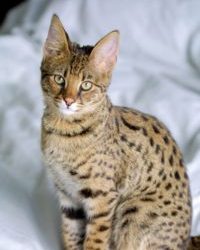
bengal cats pets
Bengal Cats are not wild contrary to many people's opinion. They were bred from the crosses of the Asian Leopard and domestic cats. And, now they are extremely popular since they make good pets and have a beautiful leopard-like coat. The breed is said to be more domestic than wild, yet it has retained some of the habits peculiar for a wild animal such as climbing trees. Nowadays, almost all major organizations recognize the breed and it is eligible for showing.
Bengal Cats - Description
These are large cats that can reach a size of 15 pounds. Females are usually smaller than males with the average weight being 8-10 pounds. They are robust rather than delicate and have a well-developed muscle structure. The legs should be slightly longer in the back than in the front. The feet are large and rounded. A broadhead that may seem slightly small in proportion to the body characterizes the breed. The muzzle is broad and has prominent whiskers with high cheekbones.
Bengal Cats Coat The Bengal cat has a very soft short to medium coat that is slightly longer in kittens. It is thick and luxurious and comes in various color patterns. Some Bengal cats may have a traditionally dark background color with stripes and spots. Others are called snows since the background color is creamy or pale white. It is desirable for Bengal Cats to have glitter.
Bengal Cats - Breeders - Rescues
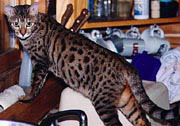
Those Bengal cats that have at least three to four Bengal-to-Bengal breedings in their background are considered as the best pets. An SBT (stud book tradition) Bengal cat has four or more generations of Bengal-to-Bengal breedings. F1 Bengal cat comes from a breeding of a Bengal cat and the Asian Leopard, so F2 Bengal cats come from Bengal-to-Bengal breeding with one Bengal-to-Asian Leopard Cat breeding, etc. Once, the Bengal cat could be bred to cats with similar color pattern, yet this practice seems to be gradually reduced. Nowadays, most catteries breed Bengals to Bengals and are proud of their pets. The price of a Bengal cat varies from $650 to $800 and can reach as much as $2000. Needless to say, pet quality Bengal cats are comparatively less costly than show quality Bengal cats.
Those Bengal cats that have at least three to four Bengal-to-Bengal breedings in their background are considered as the best pets. An SBT (stud book tradition) Bengal cat has four or more generations of Bengal-to-Bengal breedings. F1 Bengal cat comes from a breeding of a Bengal cat and the Asian Leopard, so F2 Bengal cats come from Bengal-to-Bengal breeding with one Bengal-to-Asian Leopard Cat breeding, etc.
Once, the Bengal cat could be bred to cats with similar color pattern, yet this practice seems to be gradually reduced. Nowadays, most catteries breed Bengals to Bengals and are proud of their pets. Needless to say, pet quality Bengal cats are comparatively less costly than show quality Bengal cats.
TICA (The International Cat Association) registers Bengal Cats, so do most other registries except the CFA (Cat Fancier's Association). For more information about standards and registries contact the AACE (American Association of Cat Enthusiasts), ACF (Australian Cat Federation), ACFA (American Cat Fanciers Association), TICA, or UFO (United Feline Organization). Various organizations dedicated solely to Bengal Cats can also provide information about the breed and breeding issues.
(adsbygoogle = window.adsbygoogle || ).push({});
Bengal Cat Breeders
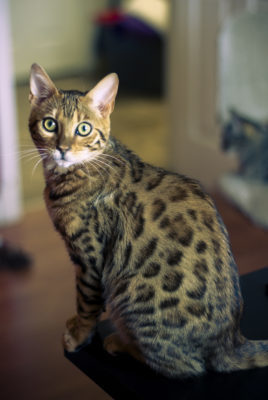
bengal cats pets
Of all Bengal Cat Breeders, Jean Mill is definitely the most recognized and famous one, since it was her who created this unique breed, and to who the whole world owes the pleasure of contemplating these sweet little leopard cats. Bengal Cats look very similar to Wild Asian Leopards, as they carry their gene, but they are not wild by nature and are as good with humans as any other domestic cat.
Bengal Cats enjoy home life, and they cannot imagine it without interaction with their loved ones. They are very strong and enduring cats and are quick to learn new things and tricks. Bengal Cats enjoy splashing about in water and are famous for the vocal characteristics that single them out from all other domestic cats. Besides their melodic meowing, they can give all sorts of trills, twitters, chirps and so on. They seem to have a much richer vocal language than most other domestic cats, although they are not extremely noisy. Bengal Cat Breeders can tell you all you want to know about the cat’s temperament so that you will see if this is the right cat for you.
Many people have a biased attitude toward these cats because of their wild appearance and for fear of aggression. All purebred Bengal Cats of today are completely free from wild behaviors, being even more people-oriented than some most intelligent Oriental cat breeds. Bengal Cats are superb pets, and they never show unmotivated aggression. They enjoy being carried in the arms, and are good with strangers. Show cats are known to withstand over 100 handlings each day without a single growl or bite. If you would like to have a “miniature leopard” in your home but still have doubts about his temperament, it is high time for you to turn to an experienced and qualified Bengal Cat Breeder who will dispel all myths and misconceptions about this wonderful breed.
Bengal Cats have a flexible and sturdy body formation. Their coat comes in spotted or marble patterns. There are quite many coat color patterns common to the Bengal Cat, and there are no two identical cats on the planet. However, all Bengal Cats bear a strong resemblance to the Wild Asian Leopard, as this is the reason why they were bred. Bengal Cats are the only felines whose coat has a unique pearl or gold dust sheen and notably soft texture. Bengal Cats are large domestic felines, weighing up to 20 lbs. These cats are capable of expressing their emotions in numerous fashions and can be either rambunctious or peaceful, depending on their mood. Bengal Cat Breeders take great care selling their cats to responsible and trustworthy people, who will not engage in unethical breeding or take to abusive or harsh handling.
Domestic Bengal Cat
The Domestic Bengal Cat is a unique breed of cats, which is not yet recognized by the Cat Fanciers’ Association (CFA), but it has a registry with the International Cat Association (TICA). Actually, the Bengal Cat is a hybrid cat that was created by crossing the wild Asian Leopard with a number of domestic breeds with the goat to create a “miniature” leopard with what can be termed as “absolutely domestic temperament”. Indeed, Bengal Cats, though they look definitely wild, are absolutely people oriented and show no more aggression than any other domestic feline.
Domestic Bengal Cats possess a characteristic leopard-like appearance and are strongly reminiscent of their wild ancestors. They are sturdy and athletic, with hind-quarters a little higher than the front, and with a characteristic thick striped tail. The coat is spotted or marbled, and there are a number of coat patterns typical of the breed: Seal Marbled Lynx Point, Seal Mink Marbled Tabby, Seal Mink Spotted Tabby, and Seal Spotted Lynx Point, and so forth. The coat is very smooth and feels silky to the touch, and it has a unique pearl or gold dusting glitter. Bengal Cats have dark stripes extending from their eyes and going to the back of the neck.
The Domestic Bengal Cat is a very intelligent and communicative feline. He is absolutely free of any unprovoked aggression and will love to keep you company in whatever job you are going to do. Bengal Cats are renowned for their sweet and loving temperament, as they have scores of ways of expressing their emotions. They seem to completely understand human language and can be trained to do a number of tricks. Many Bengal cats learn easily to open doors, turn on and off water taps, switch on and off a light, etc. They are particularly inquisitive about food. The Bengal Cat is one of the few felines that love water. The Bengal Cat is famous for his loud and melodic voice, as well as for a number of other unique, almost bird-like twittering and chirping sounds he can produce.
Bengal Cats are not widely spread, and hence they are highly prized. If you feel like having one in possession, you must be ready to pay a large sum of money for a kitten. It is absolutely imperative that you purchase only from a reputable breeder and strictly follow his or her advice on how to properly care for this cat. The Domestic Bengal Cat is a very friendly and affectionate companion, but you must make sure all cats are well socialized and enjoy good care.
(adsbygoogle = window.adsbygoogle || ).push({});
Bengal House Cat
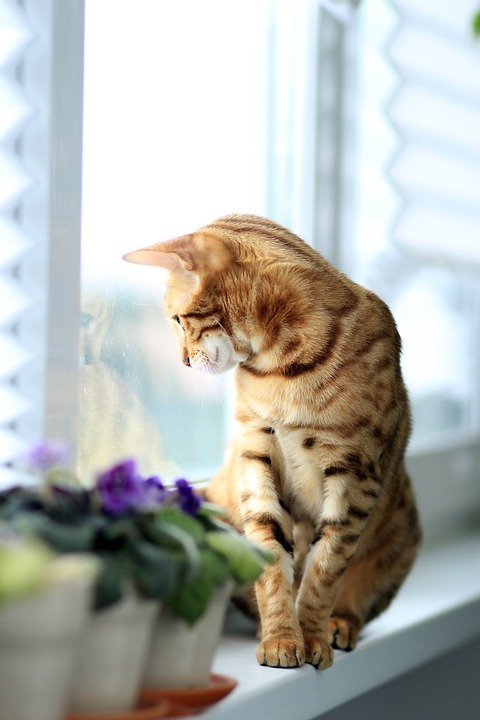
Bengal cats
The Bengal House Cat is a great pet, as he is not too demanding in terms of daily care. However, this is quite a rare and expensive breed of cats. The breed originated in the 1970s, by Jean Mill, who strove to develop a unique feline species with the size and temperament of a usual domestic cat and with the appearance of a leopard. In other words, the Bengal cat resulted from the addition of the gene of the Wild Asian Leopard to the domestic cat’s genetic pool.
The Bengal cat was accepted as a breed in 1983 by the International Cat Association (TICA). However, the Cat Fanciers Association of the USA rejected the breed as most American organizations tend to be more suspicious about hybrid species. Today, there seem to be few reasons to fear behavioral problems in the Bengal Cats allegedly stemming from the Leopard’s gene, as these cats are more people-oriented and better lap companions than many old and reputed domestic cat breeds. Bengal House Cats of today are not sterile and are bred successfully. First crossings did produce sterile males, but Jean solved this problem by diversifying the animal’s genetic makeup. There are no sterile species in four-generation Bengal Cats.
This wonderful breed attracts the attention of cat lovers all over the world by its exotic feline appearance. Their coat features characteristic jaguar-like patterns of rosette-shaped spots on the back and sides. There are distinctive dark lines extending from the eyes and then go backward. Bengal House Cats are large in size, weighing 10-20 lbs; males are larger than females. Bengal Cats come in spotted and marbled colors, which include the following: Seal Spotted Lynx Point and Seal Marbled Lynx Point, Seal Sepia Spotted Tabby and Seal Sepia Marbled Tabby, Seal Mink Spotted Tabby, Brown Spotted Tabby, Brown Marbled Tabby, and Seal Mink Marbled Tabby.
Bengal Cats are increasingly popular in various parts of the world. With so many people showing interest in this breed, Bengal breeders and experts have realized the importance of preserving the purity of the cat’s gene pool. For this reason, responsible and reputable breeders tend to scrupulously check potential buyer’s personal qualities and opportunities in order to make sure they can handle them properly and keep them sound and healthy. Every buyer, in turn, must purchase kittens only from reputable breeders, who produce purebred kittens and breed for quality, not quantity. Purchasing from a responsible breeder will guarantee you a happy and funny life with your Bengal House Cat for years to come.
Bengal Cats - Temperament and Habits
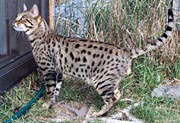
Bengal cats are said to make good pets as they are beautiful and spend much time with their owners. They like to play and often use their claws as hands. Supply them with a toy and see how they will catch and fetch it to you. However, they have retained some of the instincts peculiar for wild cats. They are good tree climbers, so supplying them with a tree is essential.
They enjoy the water, which is not peculiar for most felines. Isn't this fact amazing? In fact, they will immediately start playing with water once the owners leave the shower on. Intelligent and playful, they make good companions for children and are generally good with other cats and dogs.
Temperament depends much on the background of the Bengal cat. The greater the percentage of Asiatic Leopard blood, the wilder the pet cat is. It is recommended to buy Bengal cats that are removed at least three or four generations from the Asiatic Leopard. Otherwise, they can be hard to manage.
Bengal cats make great show cats on the condition that they are well mannered. The standard accepts such behavior as restlessness and anxiety during a show. Yet, Bengal Cats that resist any examination and are unruly during a show should be disqualified.
https://www.youtube.com/watch?v=hL44i4o3-gM
(adsbygoogle = window.adsbygoogle || ).push({});
Follow us on : Facebook, Twitter, Instagram, Pinterest
Read the full article
#bengalcats#bengalcatsandwater#bengalcatsfighting#bengalcatsfunny#bengalcatsjumping#bengalcatsplayinginwater#bengalcatsswimming#cutecats#fatcat'snewyearsresolutiononeanimalsexerciseregimencat'sstrictweightlossdiet#health#overweightcatlosesweight#tinytimfatcat
0 notes
Text
12 Facts About the Stunning Serengeti Cat
The post 12 Facts About the Stunning Serengeti Cat by Erika Sorocco appeared first on Catster. Copying over entire articles infringes on copyright laws. You may not be aware of it, but all of these articles were assigned, contracted and paid for, so they aren't considered public domain. However, we appreciate that you like the article and would love it if you continued sharing just the first paragraph of an article, then linking out to the rest of the piece on Catster.com.
With their long necks, regality and exotic features, you would think we were describing a monarch from a far-off land. In reality? We’re talking about the Serengeti cat — a brilliant breed worthy of being a royal herself!
1. The story behind this breed’s wild looks.
A tabby Serengeti cat. Photography ©KrissiLundgren | Getty Images.
The Serengeti cat was inspired by the wild African serval, but she’s not wild herself. The breed was created by Karen Sausman, a conservation biologist and owner of California’s Kingsmark Cattery. A cross between an Oriental Shorthair and a Bengal, the Serengeti cat is 100 percent domestic. Sausman is strongly opposed to the keeping of wild animals, which is why creating the Serengeti was so important to her. She believed establishing a domestic cat with truly wild, exotic looks would dissuade feline fanciers from seeking out true wild hybrids.
2. This breed’s physique is stately and statuesque.
The Serengeti cat holds her medium-sized frame in a fashion fit for a queen. Though strong and muscular, she is lithe and graceful, with a posture that could rival that of a ballerina and long legs that would make a supermodel green with envy!
3. A Serengeti cat sports adorable round ears.
Though felines are frequently seen with ears that sport points, and eyes that naturally slant, the Serengeti catstands in a class of her own with oversized ears that are rounded and large, circular eyes in bright gold or amber hues.
4. Expect spotted and sleek coats.
The Serengeti cat’s coat is short, smooth, sleek and feels like silk to the touch. Coat colors can be found in silver-spotted tabby, lavender, smoke, brown-spotted tabby, snow and solid black (melanistic), with widely-spaced spots appearing in black or dark brown shades.
5. Secret spots on Melanistic Serengeti cats.
You might think that a solid black coat would indicate that the cat is without spots, but you’d be wrong! Melanistic Serengetis have a mystical quality known as ‘ghost spotting’ — a black spotted pattern (with rings on the tail) that is barely discernible to the eye. These black beauties always have black noses, making them look like a little black jaguar!
6. This breed is an athlete.
Though you should never judge a book by its cover — and looks can be deceiving — when it comes to the Serengeti cat, you are 100 percent correct! This little lady is every bit as wild in personality as she is in looks. Her favorite pastimes include running and climbing, and while she looks like a cat fit for the jungle, her activity level is more akin to that of the Energizer Bunny!
7. How big is your typical Serengeti cat?
The Serengeti cat is a medium-sized cat. Males can weigh between 10 to 15 pounds; while females usually weigh between 8 and 12 pounds.
8. The Serengeti cat has legs for days.
In addition to being active, the Serengeti cat is a very agile feline who loves to use her long legs as leverage to catapult her onto high perches — the better to observe you from! Even more entertaining? She has the ability to reach incredible speeds and looks like a sleek race car as she zooms through the house!
9. An energetic breed.
With so much energy, can a Serengeti be left home alone? Though she does prefer company, don’t worry. She won’t pull a Kevin McCallister when you leave the house — as long as you keep an assortment of cat trees, gyms, perches and toys to keep her occupied. Think of it as a catified version of Disneyland — in your living room.
10. A Serengeti cat loves attention.
How is she with people? Practically purrfect in every way! Though outgoing, confident and affectionate, the Serengeti cat takes a bit of time to warm up to newbies (from humans to other animals). Once she gets to know you, however, she thrives with all — from children to canines and felines alike. And she’ll never turn down a warm lap to curl up in or a heavy dose of attention!
11. She’s a bit chatty.
Blame it on her Oriental heritage, but the Serengeti cat loves to chat. She’s highly vocal — striking up convos about everything from your day at work to her suggestions on what’s for dinner!
12. A Serengeti cat won’t leave your side.
The Serengeti has earned the nickname the “Velcro Cat” for her tendency to stick like glue to the person she deems her BFF!
Thumbnail: Photography ©Serhii Kucer | Alamy Stock Photo.
About the author
Erika Sorocco has been writing about cats for more than a decade; and rescuing animals since the age of 3 when she spotted a chipmunk drowning in her backyard kiddie pool. She currently shares her California home with one finicky feline (Gypsy), one crazy pup (Jake), and a collection of sweaters covered in cat hair.
Editor’s note: This article originally appeared in Catster magazine. Have you seen the new Catster print magazine in stores? Or in the waiting area of your vet’s office? Click here to subscribe to Catster and get the bimonthly magazine delivered to your home.
Read more about cat breeds on Catster.com:
The Kurilian Bobtail — 9 Things to Know
All About the American Wirehair Cat
6 Fluffy Cat Breeds to Fawn Over
The post 12 Facts About the Stunning Serengeti Cat by Erika Sorocco appeared first on Catster. Copying over entire articles infringes on copyright laws. You may not be aware of it, but all of these articles were assigned, contracted and paid for, so they aren't considered public domain. However, we appreciate that you like the article and would love it if you continued sharing just the first paragraph of an article, then linking out to the rest of the piece on Catster.com.
from Catster https://www.catster.com/cats-101/meet-the-serengeti-cat
via IFTTT
0 notes
Text
Can My Dog or Cat Give Me a Cold Sore?
See Can My Dog or Cat Give Me a Cold Sore? on The Cold Sore Treatment Headquarters or read the entire post below:
While an owner's bond with his or her pet can never be understated, neither can the importance of general health. This is especially true when to comes to the topic of cats, dogs, and cold sores.
Are you concerned that your pet could give you the herpes simplex virus? Will being licked or kissed by your dog result in a health problem for you? Do dogs get cold sores? Are you concerned that you could be at risk?
If you have those questions on your mind, and potentially much more, this material could be of benefit to you. This is especially true if you are worried about how cold sores are transmitted.
Although many of us love our pets and treat them like family, there could be a price to pay. Being licked or kissed by your dog or cat can potentially result in an unwelcome infection or virus.
Can Animals Get HSV-1?
Although pets can carry a plethora of viruses and contagious bacteria they do not carry HSV-1. Due to this fact it is indeed impossible to get a cold sore from your pet. It is important to understand that HSV-1 can only be transmitted from person-to-person, not from person to animal.
While both dogs and cats can carry herpes, as will be detailed shortly, HSV-1 is unique to humans. Your lovable animal(s) can lick your face, and you will never be at risk of developing a cold sore.
What are the risks if you have an existing cold sore? To your family pet, the risks are zero, however, the risk of additional infection is problematic for you. Your pet can indeed worsen your cold sore.
What are the final takeaways? Below are three important facts about cold sores and animals. These points are vital when it comes to answering questions related to animals, cold sores, and HSV-1.
Animals cannot carry or acquire HSV-1. This means your dog or cat cannot give you a cold sore. Additionally, this also means that you cannot pass a cold sore to a pet.
Animals can carry herpes and get cold sores. These are both vital points that will be discussed in detail shortly. However, it is critical to note this is not due to HSV-1.
Your pet can give you bacteria and germs through saliva. If you have any existing wounds, they can become infected. If you have an active sore, your pet can make your condition worse.
What Happens If Dogs Lick Cold Sores?
While cats, simply by their nature, are not as likely to lick your face, but dogs are a different story. Although their affection is adorable and charming, it is important to be on your guard. This is especially true if you are trying to heal a cold sore.
If you are enduring a cold sore outbreak and a dog licks your face negative results can occur. Essentially reinfecting the area with germs and bacteria, treatment will be required ASAP. The biggest pitfall can involve a prolonged period of recovery.
Once you can clean the sore, it will be critical to medicate the area. Additionally, consumption of water and beverages high in vitamins and minerals will be important. Once your sore has been compromised, the objective is to build up your immune system.
Here are a few simple steps you can take if your dog has licked your cold sore.
Clean the sore and surrounding areas. The use of warm water with anti-bacterial soap can eliminate germs. This is critical after your animal has licked your cold sore and mouth region.
Apply treatment. Creams, ointments, etc. Many valuable products to treat cold sores have been detailed and reviewed on this site.
Re-hydrate your body. Consume plenty of fluids to strengthen your immune system. This will allow your body to heal the cold sore naturally. Various foods can also serve as treatment aids to HSV-1.
Diseases That Are Passed from Animal to Human
Whether you carry HSV-1 or not, allowing your dog to kiss you can create some serious issues. If the transmission of disease is a major concern, this section will be vital to you.
Allowing your dog to kiss and lick you is simply unsanitary. Allowing germs and bacteria to spread in this fashion can cause illness. Dog-to-human diseases are unfortunately quite common, and many can be avoided.
What about cats? While cats licking your face is quite rare, both dogs and cats can make you sick. In some cases, animals can transmit some very serious diseases to humans.
List of Common Animal-to-Human Diseases
Regarded as one of the most contagious, ringworm can be quite troublesome. Red patches on the skin are typically the main symptom in humans. Often treated with various creams and ointments, ringworm can lay dormant for months. One way to avoid it is to wash your animal's bedding and toys.
Roundworm is the most common internal parasite found in cats. Kittens are often infected by their mother's milk. Older cats usually contract roundworm from consuming dead prey. Coughing, stomach pain, shortness of breath, and bloody stool are common symptoms in humans. It is estimated that over 10,000 children are infected each year. Treated with antibiotics, keeping your cat indoors is one way to fight roundworm.
Cat scratch disease. Known as the Bartonella germ, this problematic bacteria can be found on the nails of a cat. Transmitted to humans through biting and scratching, this disease can be serious. Some symptoms in humans can include red bumps near the infected area, headache, fatigue, and swollen lymph nodes. Joint pain and weight loss can also manifest. Sometimes antibiotics are needed for treatment. Keeping your cat's nails short are essential to prevent this disease.
While a host of other illnesses do exist, the three listed above should serve as a warning. Although your furry friend is unable to give you a cold sore, they can potentially give you much worse. It is important to always stay informed.
What Is Feline Herpes?
Quite different from HSV-1, your cat can carry the feline herpes virus. In fact, the herpes virus in cats is one of the most common causes of upper respiratory illness in felines.
Here is a brief overview on what you need to know about cats, herpes, and how it can impact you.
Feline viral rhinopneumonitis (FVR) and rhinotracheitis virus and feline herpes virus type 1 (FHV-1), are the formal names. Most cats are exposed to herpes at some point in their life.
Discharge from a cat's infected eye, mouth, or nose is the most common form of transmission. Sharing litter boxes and food can also spread the virus from cat-to-cat.
An infected mother can spread herpes to her unborn. It is common for catteries and households with multiple cats to be a contagious zone for herpes.
Humans are not at risk. It is important to recognize classifications. Herpes comes in different forms. This is the case for humans as well as animals. FVR and FHV-1 will not give you a cold sore.
Most cats that acquire herpes never get rid of the virus. Similar to humans in this regard, treatment is available although the virus remains. Medications and antibiotics are available to cats in virtually the same way they are to humans.
Although not addressed in detail within this section, dogs can get herpes as well. Known as the canine herpes virus or CHV, herpes can be potentially fatal in puppies. This virus cannot be transmitted to humans.
Pets, Cold Sores, and Education
While many of us do treat our animals like people it is important always to be careful and vigilant. This is paramount when it comes to infection and disease. Just because your dog or cat cannot give you a cold sore does not mean all is well.
Although this material essentially blurs the line between human health and pet health, there is a common ground. Understanding pet health can be critical to protecting your health.
If you are currently lacking the proper knowledge as it relates to cold sores this site is here to help. Understanding that animals cannot transmit HSV-1 is only a small part of keeping you and your family safe.
0 notes
Text
The Russian Blue Cat – One Color Fits All
The Russian Blue Cat – One Color Fits All
Russian Blue Cat – In order to discuss the origins of cat breeds, we need a fifth classification, namely, it-is-believed-that data; for accounts of the origins of many breeds begin with this construction. It is believed that, for example, the Russian Blue Cat originated in or about the city of Arkhangelsk, a port on the White Sea located within shivering distance (about 150 miles) of the Arctic Circle. It is further believed that sailors may have brought Russian blues to western Europe in the 1860s; but to believe that the Tsar of Russia or Elizabeth I or Queen Victoria of England owned Russian blues is to embrace the unbelievable. We have this on the authority of cat fancier Ingeborg Urcia, who wrote a brief history of the Russian Blue Cat some years ago.
There is “absolutely no factual evidence” to support these claims, claimed Urcia, who reported that “there is still some dispute as to whether the Russian Blue Cat really came from that country, although evidence does point to a northern origin.”
Other writers — like Frances Simpson, British author of Cats and All About Them, published in 1903 — have raised additional questions about the blue angels from Arkhangelsk. “The best authorities,” wrote Simpson, “seem to agree in believing that they [Russian blues Cats] are not a distinct breed, and therefore they are now classed at our Shows amongst the short-haired English varieties.” (Russians were classified in this fashion until 1912 when they were transferred to the foreign blue class.)
Opinions about their derivation and patrimony notwithstanding, Russian Blues had appeared on the show bench in England as early as 1875; and though we cannot say with ratio-data certainty that the breed originated near Arkhangelsk, records indicate that most of the known early members of the breed — which was called by a variety of names, including Archangel and Maltese — did come from Russia.
(adsbygoogle = window.adsbygoogle || []).push({});
Whatever its origin, the Russian blue never melted the ice in the cat fancy the way blue longhaired cats or blue British shorthairs did in the late 19th and early 20th centuries. These latter cats so dominated their breeds that many people spoke of them as though they were the breed. Thus the regal-sounding British blue designation was born, an august way of describing what was actually one color class among many in the British shorthair pantheon. Thus, too, did the color-bred blue Persian — which must document at least three and preferably five generations of nothing-but-blue ancestors — come to personify the Persian breed for many years.
Russian Blue Cat – No Locke on Success
The Russian Blue Cat – One Color Fits All
The first Russian blues to reach this country arrived circa 1900. Mrs. Clinton Locke of Chicago, who was also one of the first breeders to import Siamese to the United States, purchased a cat named Lockhaven Royal Blue around that time. She obtained this cat from a British fancier with the wonderfully Monty Python-ish name of Towlerton Flansholm. Another turn-of-the-century Chicago cat breeder, Mrs. Frederick Monroe, has been identified as the owner of a blue-and-white Russian Blue Cat, which is something of an anomaly since modern-day Russians are available in blue genes only.
We can assume that these early imports were not considered the cat’s pajamas in the show ring. Dorothy Champion, writing in Everybody’s Cat Book in 1909, observed, “[Shorthaired] Blues are usually kept for show purposes only in England, and are not nearly so plentiful as house pets as they are in this country, where they are called ‘Maltese.'”
Despite the early sniffing and sniping of purists who contended that Russian blues were not a legitimate breed, these lithe, double-coated charmers with the vivid green eyes continued to thrive — if not thoroughly prosper — until the beginning of World War II. Prosperity being severely rationed at that juncture, many catteries disappeared and so (nearly) did a number of breeds, the Russian Blue Cat among them. Consequently, post-war concerns about breed purity became academic as cat fanciers scrambled to make whatever judicious compromises they could in order to ensure the survival of their chosen breeds. As a result blue point Siamese was crossed with Russian blues in England in an effort to resuscitate the latter; and breeders in Scandinavia, working independent of English influence, used the same technique to establish the Russian Blue Cat in their country, too. The Scandinavians, however, produced a cat different from the born-again Russian Blues in England. The Scandinavian Russian Blues had larger heads, larger bodies, and shorter, tighter, darker coats than their British counterparts had.
Meanwhile, the Russian Blue Cat was reintroduced to the colonies when Mr. C.A. Commaire of Texas imported two Russian blues from England in 1947. The breed’s subsequent acceptance by United States registries made it one of the half dozen varieties of cats that could be seen at shows as the 20th century passed the 50-yard line. (The other breeds were the Persian, Siamese, Abyssinian, American Shorthair, and Manx.) Eventually, breeders in this country combined the splendid heads and emerald-green eyes of the Scandinavian lines with the pale, silver-blue coats and graceful body type of the British Russian blues.
Until the mid-’60s, when the Korat gained championship status, the Russian was the only all-blue breed in the cat fancy. These one-flavor contestants were joined on the show bench by another true blue type, the Chartreux, in the 1980s and yet another, the Nebelung, which is a longhaired Russian Blue Cat, in the 1990s.
If anyone should stop you on the street and say “Your money or the difference between the Russian Blue Cat, Korat, and Chartreux,” here’s what to say: “The Chartreux is the one with gold or copper eyes and the baked-potato-on-toothpicks body. The Russian Blue Cat is long and fine-boned, with a modified wedge-shaped head. The Korat has the largest eyes, a middle-of-the-road torso, and — if you look closely — front legs that are slightly shorter than its back legs.” Then, while your inquisitor is busy being impressed, you can make your escape.
Russian Blue Cat – The Building Code
The Russian Blue Cat – One Color Fits All
The Russian Blue Cat is a fine-boned cat with a long, firm, muscular body that is lithe and graceful without being tubular after the fashion of Oriental breeds. The Russian’s head is a smooth, medium wedge, neither long and tapering nor short and massive. The muzzle is blunt without an exaggerated whisker break. The top of the skull is long and flat in profile, descending gently to a point just above the eyes and continuing at a slight downward angle in a straight line to the tip of the medium-length nose. There is no stop or nose break, and the length of the nose should be shorter than the length of the line from the top of the skull to the eyes.
Wide-set, vivid-green eyes, at least one eye width apart, confer a broad look to the Russian blue’s face. The eyes, according to most observers, should be round, or just oval enough to show [an] oriental slant.
Large ears — wide at the base, and more pointed than rounded — crown the Russian Blue head. The ears are set far apart, as much on the side of the head as on the top.
The Russian Blue Cat has a short, dense, fine double coat that stands out from the body. In a double coat, the two outermost layers of hair — the guard hairs and the awn hairs — are the same length. Normally guard hairs are longer than awn hairs, which, in turn, are longer than down hairs. An even, bright blue throughout, the soft, silky coat has silver-tipped guard hairs that give the Russian Blue Cat a shimmering, lustrous appearance.
Russian Blue Cat – Personality Profile
The Russian Blue Cat is a quiet cat that metes out devotion on its own terms. Though it is not precisely a hail-feline-well-met, the Russian blue is, nevertheless, capable of forming relationships that are as lustrous and jewel-like as its stunning green eyes.
(adsbygoogle = window.adsbygoogle || []).push({});
Follow us on : Facebook, Twitter, Instagram, Pinterest
The post The Russian Blue Cat – One Color Fits All appeared first on Funny Cute Cats.
from WordPress http://bit.ly/2SiQ9bN
via IFTTT
0 notes
Text
Ocicat A Circular Success Breed cat
Ocicat A Circular Success Breed cat
In 1965, the year the first ocicat was exhibited, astronomers discovered that Venus rotates in a different direction from the other planets. The same might cordially have been said of Virginia Daly, the Berkeley, Michigan, breeder who created the ocicat. Instead of working with one or two breeds at a time, as most cat fanciers did, Daly juggled as many as four breeds simultaneously in addition to cultivating “rare, unusual, newly developed varieties.” Her Dalai cattery was also larger than life, and for years she housed 40 cats, a number of which had litters annually.
Before Daly became involved with ocicats she had bred the first redpoint Siamese female in the history of the American Cat Fanciers Association to earn the grand champion title. That singular moment occurred in 1950. Daly also produced – by crossing a red Persian and a Siamese – the grandmother of the first All-American flame point Himalayan kitten. Along the way she produced a few waves among breeders, too, some of whom looked upon innovation with the same warm affection the National Rifle Association reserves for President Clinton. Indeed, one of Daly’s critics made the push that turned to shove that turned Daly’s attention to ocicats. That self-appointed censor, Daly recalled, “incomplete scorn of my ‘mongrels’ exclaimed in derision, ‘The next thing you’ll be making will be an Abyssinian-pointed Siamese.'”
Those were famous first words. “Until then I had never dreamed of such a thing,” said Daly, “but I decided to take up the challenge.”
Ocicats – Mixing and Matching
The challenge Daly took up required her to breed a Siamese cat whose points – face, ears, legs, and tail – would be the color of an Abyssinian instead of the traditional Siamese colors: seal, chocolate, lilac or blue. The first step in that direction was to breed a Siamese to an Abyssinian, obviously, and Daly just happened to have some around. The Siamese she chose was a seal point female named Tomboy Patter, whom Daly bred to a ruddy Abyssinian male named Dalai Deta Tim of Selene. The resulting kittens looked like Abyssinians, but they carried the recessive gene for the Siamese pattern, a gene they had inherited from their mother.
When Daly bred one of these Siamese-Aby crosses – a female named She – to a chocolate point Siamese male named Whitehead Elegante Sun, She (or she) produced an Aby-pointed Siamese, a cat whose points displayed the Abyssinian ticked tabby pattern, in which two colors occupy alternating bands on each hair from the shaft to the tip. She also produced, in her second breeding with Elegante Sun, “a large, ivory cat with bright golden spots and copper eyes,” whom Daly named Tonga – and whom her daughter christened the ocicat because of his resemblance to the spotted wild cat.
(adsbygoogle = window.adsbygoogle || []).push({}); This resemblance notwithstanding Daly never considered the possibility that Tonga might be charter member number one of a new breed of cat until after he had been sold – for $10, with a neuter agreement – to a medical student named Thomas Brown. About a week later Daly saw an article in the erstwhile Journal Of Cat Genetics wherein Clyde Keeler of Georgia University suggested that someone ought to try to reincarnate the long-extinct Egyptian spotted fishing cat. Daly wrote to Keeler saying she had done precisely that, and the cat had been sold recently.
Keeler urged Daly to retrieve Tonga and to breed him back to his mother, but Tonga was never available when She was in season. Tonga’s father was able to oblige, however, and a subsequent breeding between him and She produced a litter of seven that looked like remnants from Joseph’s coat: a classic tabby, a mackerel tabby, a lynx point, a black, a seal point, the desired Aby point, and an unexpected – but even more desirable – fellow with bright golden spots on an ivory-colored background, whom Daly called Dalai Dotson.
Let ’em Breed Cake – Ocicat
This second coming of a spotted cat marked the end of any interest on Daly’s part in working with Aby-point Siamese. “There are enough Siamese in the world,” she said. “Why would you continue with bread when you can make a cake?”
Although Tonga didn’t get to do any baking of his own, he did have a brief show career, beginning with an appearance at the Detroit Persian Society’s 41st Championship Show on February 20-21, 1965. Tonga was one of 16 cats entered in a “Special Exhibit” that, according to the show catalog, contained the “breeds of the future.”
The ocicat’s future actually began at the Detroit show the following year when Tonga caught the imagination of the late Cat Fanciers’ Association (CFA) judge Jane Martinke. Not long after the Detroit show, CFA announced that the ocicat would be accepted for registration, the first step on the path to qualifying as a new breed of pedigreed cat. Yet by October 15, 1970, only two ocicats had been enrolled in CFA. In a late-’70s newsletter to prospective ocicat fanciers, Daly explained that one reason for the breed’s spotty progress was a pet limitation ordinance passed by the town council where she lived.
We were “limited to only three adult cats instead of our [longtime] 40-cat cattery,” wrote Daly. Readers with a sense of history and irony should appreciate that this ordinance was passed 30 years ago – long before the appearance of the San Mateo ordinance in the fall of 1990, legislation generally credited with setting off the current debate about the righteousness of imposing population limits and other restrictions on pet ownership and breeding. The Berkeley, Michigan, ordinance came in on little cat feet because it, like many others, was passed before the age of fax machines and the Internet.
The three-cat ordinance wasn’t the only speed bump on the road to the ocicat’s official recognition. “My 87-year-old aunt, who had just broken her hip, came to stay with us, which made the cats take a back seat for a while,” wrote Daly. That “while” lasted 11 years. As a result the ocicat – which Daly had hoped was on the verge of moving from registration to provisional status in 1966 – didn’t get off the verge until February 1986, when CFA at last granted the ocicat provisional status, making it the slowest overnight sensation in the cat world.
The following year the ocicat was granted full championship status not only by CFA but also by The International Cat Association (TICA). Ultimately the ocicat was accepted by every North American cat registry. Coincident with their provisional acceptance ocicats could no longer be bred to Siamese or American shorthairs. Breeders will be allowed to breed ocicats to Abyssinians until 2005.
The ocicat might have been a slow overnight sensation, but sensational it was. Ocicats International, a breed club that was formed in 1984 with 22 charter members, sported a membership of 200 within three years. There were only 99 ocicats registered with CFA between 1966 and 1980. There were nearly 400 registered by early 1987, and by the following year the ocicat ranked 14th among the 35 breeds then registered by CFA. Most recently, in 1998, the Ocicat ranked 13th among the 37 breeds registered by CFA. The breed’s 728 new registrations for the year were 11 percent lower than they had been the preceding year, when the ocicat ranked 12th in CFA’s hierarchy.
Obviously, there was more to the ocicat’s resurgence than the death of Daly’s aunt, who never much liked cats anyway. Lively promotional work by Ocicats International helped put the ocicat in the spotlight, where the ocicat’s resemblance to spotted jungle cats, its impressive size, commanding presence and winning personality all helped to ensure its popularity.
The Building Code – Ocicat
The ocicat is a large, athletic animal with a powerful body, substantial bone, a level back (or a slight rise from shoulder to tail) and ribs that are somewhat sprung. A graceful, arching neck supports the ocicat’s modified wedge-shaped head, which curves gently from muzzle to cheek and exhibits a mild rise from the bridge of the nose to the brow. The ocicat’s compelling expression is the handiwork of large, almond-shaped eyes ringed with mascara markings. The eyes, which angle moderately upward toward the ears, are separated by more than the length of an eye.
The ocicat has a broad, well-defined muzzle, with a hint of squareness, that shows good length in profile and betrays no suggestion of snippiness. The chin is strong. The whisker pinch, moderate.
Alert, modestly large ears complete the ocicat’s head. The ears should be set at the corners of the upper, outside dimensions of the head.
Each hair on the ocicat’s short, satiny, close lying and lustrous coat – with the exception of those hairs on the tip of the tail – accommodates several alternating bands of color. At the spots where these bands coalesce, they fashion distinctive, thumbprint-shaped markings composed of dark tones on a lighter background. Rows of spots march along the spine from shoulder blades to tail. Spots scatter across the shoulders and hindquarters, extending far down the legs. There are broken bracelets on the lower legs and broken necklaces at the throat – the more broken the better. Large, well-scattered, thumbprint-shaped spots proliferate on the sides of the torso into a subtle suggestion of the classic tabby’s bulls-eye pattern. Even the belly is well spotted.
The ocicat wears any of 12 colors well: A tawny ocicat has black or dark brown spotting on a ruddy or bronze ground color. Two colors – chocolate and cinnamon – appear against a warm ivory ground color. Five additional colors – chocolate silver, cinnamon silver, blue silver, lavender silver, and fawn silver – arrange their spots on a white ground color. Blue ocicats have blue spots on a pale blue or buff ground; lavender ocicats have lavender spotting on a pale buff or ivory ground; a fawn’s spots are set in a pale ivory ground, and an ebony silver’s spots are black on a pale silver/white ground.
Personality Profile of Ocicats
Ocicats have been described as “almost dog-like in their devotion to humans” and “very eager to please the people they own.” Breeders also report that ocicats are voice sensitive. They don’t like being scolded. If reprimanded, they stop what they’re doing, and don’t repeat the unwanted behavior, at least not right away.
Ocicats are also praised for their extreme intelligence and sociability. “They want to be wherever you are. They’ll follow you anywhere and everywhere. If you want to take a shower, you’d best make sure you shut the door, or you might have a cat in the shower with you.”
(adsbygoogle = window.adsbygoogle || []).push({});
Follow us on : Facebook, Twitter, Instagram
The post Ocicat A Circular Success Breed cat appeared first on Funny Cute Cats.
from WordPress http://bit.ly/2UfkbKS
via IFTTT
0 notes